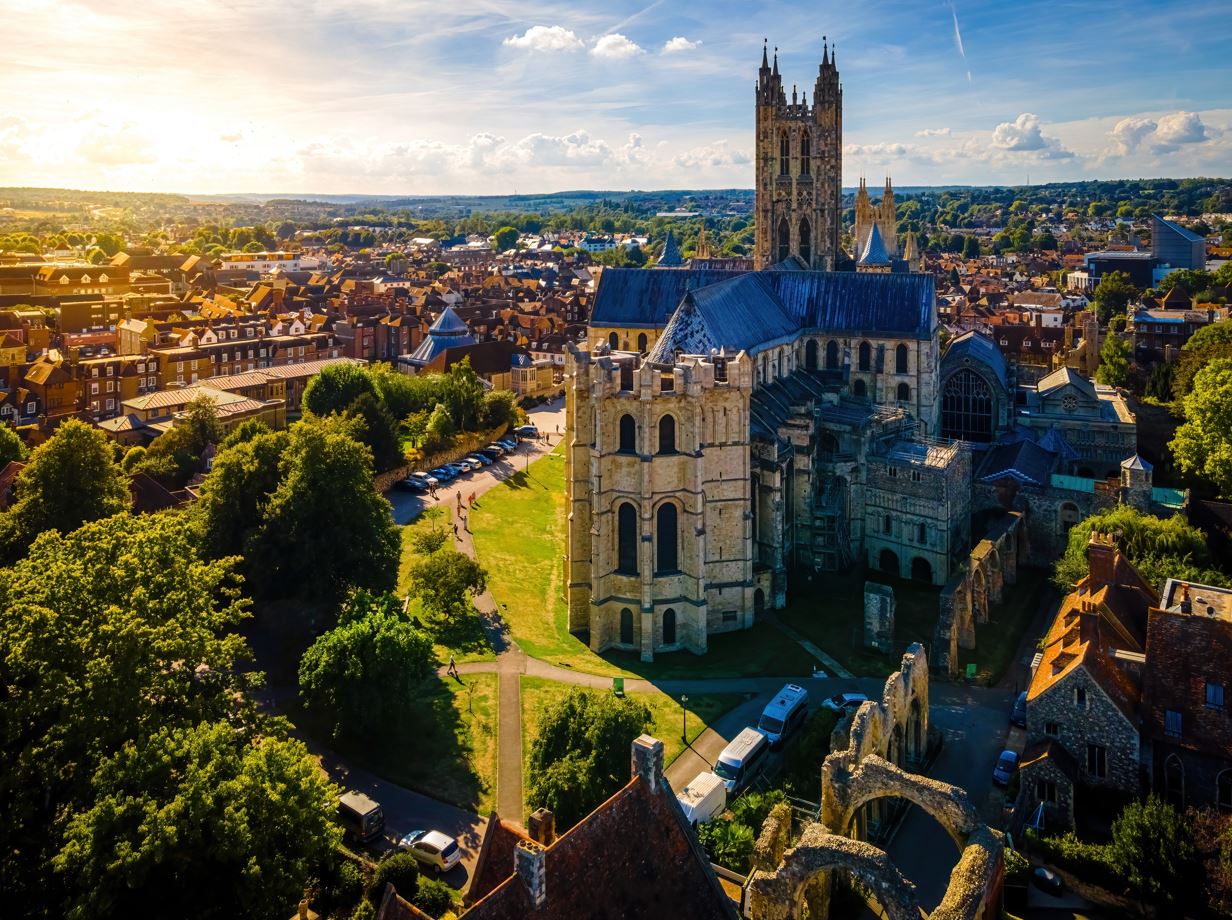As a gateway county, immigration has been and remains a key issue in Kent, but equally it is a region through which people pass, often but not exclusively to London. In the 15th century, and, at other times, the Channel was a highway, not a barrier and the arrival in Hythe of a group of Frenchwomen arriving to sell their beer before returning home again was unusual but not unknown.
It is interesting to note that where we have the information, Kent’s immigrant population was largely from various towns in the Low Countries, that is the Netherlands, Belgium and parts of northern France. Further afield, there were a few immigrants from Germany and Poland, including John White from the Hanseatic port of Gdansk who had settled in Faversham. Additionally, by the 1450s a group of merchants from Genoa were heavily involved in shipping woad into Sandwich for use in the county’s cloth industry. Sandwich offered warehousing facilities, which meant it was not the merchants per se but their factors or commissioning agents who resided there.
Even though Canterbury did not totally dominate as a place of residence for these immigrants, it was important due to its location within the rich agrarian hinterland of east Kent, its status as a major ecclesiastical centre and its role as an international pilgrimage destination. Another potential ‘pull’ factor, although potentially a ‘push’ issue too was the incidence of plague and that the city like other places throughout the century was continuing to experience devastating outbreaks of plague about once per decade. And it is a simple equation, urban communities need people – as producers certainly but equally as consumers – aliens, like migrants from other parts of Kent and further afield to a degree at least replenished the city’s population.
However, the pattern changed over the century, the early buoyant replaced by a downturn in the 1440s and 1450s, reflecting the mid-century economic depression, the increasingly volatile political situation and the devastating outbreak of plague in 1457.
Higher figures in the 1460s and 1480s perhaps reflect the more stable political situation and the relative buoyancy of the city’s economy in contrast to the intervening decade. The marked fall in the 1490s may have been due partly to local problems affecting cloth making, which prompted the city authorities to engage in several protectionist policies, including their involvement in the issuing of various craft guild ordinances. A prime reason for the problems of the city’s broadcloth industry was the increasing production taking place in the small Wealden towns instead of Canterbury where producers could take advantage of the area’s natural resources, industrial expertise provided by Flemish immigrants and the presence of local labour.
Another aspect that might be said to have modern resonances concerns social status because servants formed a significant immigrant category, especially in the later decades. For many life-cycle servanthood gave a young person the chance to earn a wage working often in the household of a relative, neighbour or friend of that person’s parents. There they gained valuable skills – household and craft – helping them in terms of marriage and as independent or employed artisans.
Equally, some immigrants were specialist craftsmen, including Rumuldus de Platea a writer, Giles Odyrwell a painter and John Pyle a glasswright, who possibly initially arrived to fulfil a specific contract and then stayed on in Canterbury. Others brought innovations to Canterbury, including beer brewing rather than the traditional production of ale, John Harryes being sufficiently successful that he became a freeman by redemption.
However, even though immigrants may not have been that numerous in late medieval Kent and Canterbury, they were viewed as useful by the authorities (local and national), including as taxpayers, and seemingly lived peacefully alongside their local neighbours. As would be repeated at various times over the centuries, the challenging economic conditions of the late 15th century brought some restrictions, but not the violent outbursts that occurred in London, possibly due to the apparent absence of ethnic enclaves in Canterbury and Kent’s other towns. Consequently, looking to the past may offer useful ideas for today and into the future.
Dr Sheila Sweetinburgh is Lecturer in Medieval & Early Modern Studies and Co-Director of the Centre for Kent History & Heritage.
 Expert comment
Expert comment Emma Grafton-Williams
Emma Grafton-Williams 2064
2064


